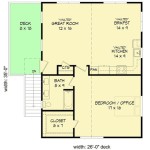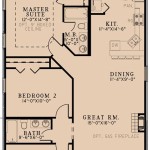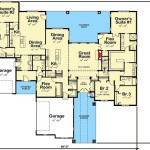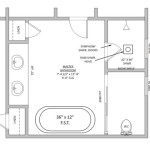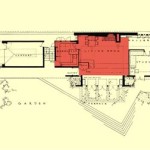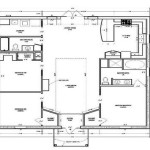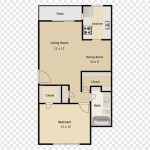Walk-In Pantry Floor Plans: The Ultimate Guide to Designing Your Dream Pantry
When it comes to home design, functionality and efficiency are essential. And when it comes to the heart of your kitchen - the pantry - a well-designed floor plan can make all the difference.
Walk-in pantries are the perfect solution for maximizing storage space, keeping your kitchen organized, and providing a convenient access point for food and appliances. Here's a comprehensive guide to designing a walk-in pantry floor plan that meets your specific needs.
1. Determine the Size and Location
The first step is to determine the size and location of your walk-in pantry. The size will depend on your storage requirements and the available space in your home. A pantry measuring 5x8 feet is a good starting point, but you may need more or less depending on your needs.
As for the location, a pantry is often placed adjacent to the kitchen, but you can also consider a separate room or even use a portion of a basement or garage.
2. Plan the Layout
The layout of your pantry should be designed to maximize functionality and convenience. Consider the following elements:
- Shelving: Choose adjustable shelves to accommodate items of varying heights. Consider open or closed shelving options.
- Countertop: A countertop provides a convenient surface for preparing food or packing away groceries.
- Appliance Storage: Designate specific areas for small appliances, such as a coffee maker or blender.
- Lighting: Natural light is ideal, but consider adding artificial lighting to ensure proper visibility.
- Ventilation: A small window or vent will help circulate air and prevent odors.
3. Optimize Storage
The key to a well-organized pantry is maximizing storage space. Here are some tips:
- Use Vertical Space: Install tall shelves and stack items vertically to utilize all available height.
- Maximize Wall Space: Utilize wall-mounted organizers, such as pegboards or hooks, to store small items.
- Consider Drawers: Drawers are great for storing items that you want to keep out of sight.
- Use Clear Containers: Transparent containers allow you to easily identify items, eliminating wasted time searching.
- Maximize Corner Space: Utilize corner shelves or lazy Susans to make use of often-neglected space.
4. Consider Additional Features
To make your walk-in pantry even more efficient, consider adding additional features:
- Refrigerator or Freezer: A built-in refrigerator or freezer can store perishable items.
- Sink: A sink allows you to conveniently prepare food or wash items.
- Walk-Through Design: A pantry with a walk-through design offers easy access to items from both sides.
- Island: An island provides extra storage and a prep area.
- Child-Safe Design: If you have small children, consider designing a pantry with child-safe features, such as rounded corners and soft-close doors.
Conclusion
Designing a walk-in pantry floor plan that meets your specific needs is essential for maximizing storage space and streamlining your kitchen workflow. By following the tips and considerations outlined in this guide, you can create a pantry that is both functional and beautiful.
Remember, the key to a well-designed pantry is to plan carefully and make the most of the available space. With a little creativity and attention to detail, you can create a pantry that will become a central hub for your kitchen organization and efficiency.

Walk Pantry Joy Studio Design Jhmrad 143618

Kitchen Pantry Design 101 Life Of An Architect

Kitchens On My Mind Your Opinions Please

Pantry Room Kitchen Floor Plans Layout

Best Use Of This Walk In Pantry Space Houzz Au

All The Kitchen Plans Chris Loves Julia

Brainstorming Where Can I Put A Walk In Pantry Addicted 2 Decorating

Kitchen Floor Plans

Walk In Pantry Design Honor Of

Floor Plan Friday Family Home With Walk Through Pantry Media Room

